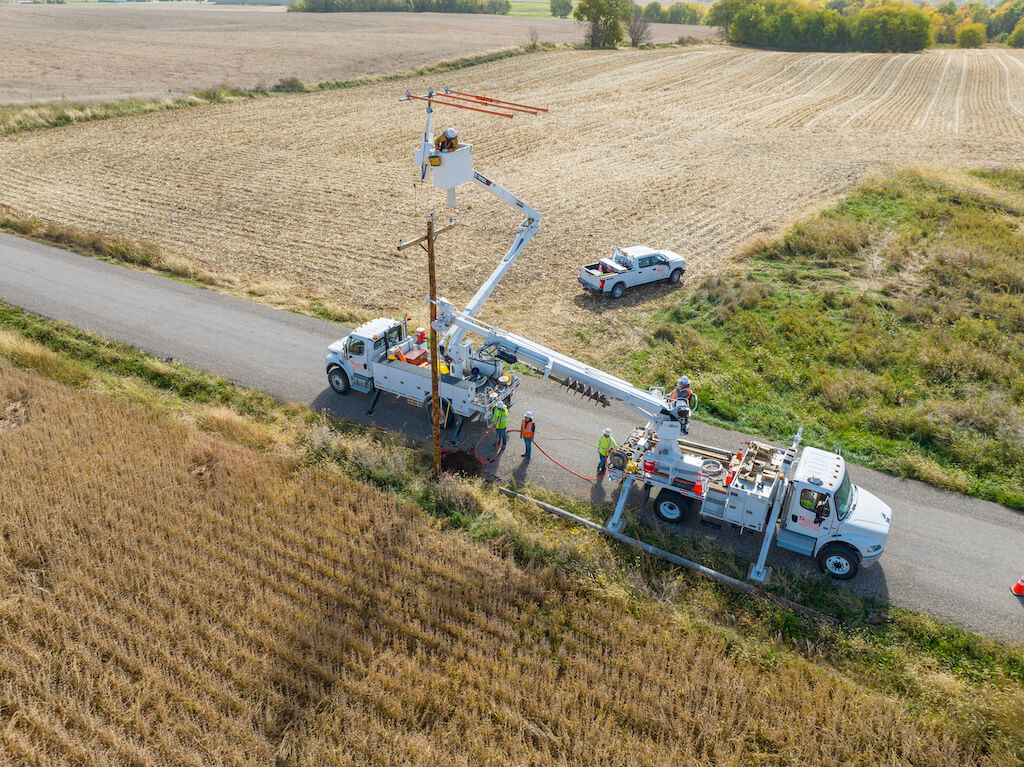While new and innovative ways of performing tasks can be more efficient and convenient from outsiders looking in, many of us are guilty of resisting change, clinging to the way we’ve “always done things”.
This can be especially true for those who work in the utility industry when making the switch between pencil-and-paper data collection methods or changing the software they have been using for many years.
It is very important to keep your field crews in mind when choosing digital software and technologies into your utility operations. This blog provides a field-worker’s perspective of making these types of changes, and tips for making it seamless for field crews.
Saying Goodbye to Paper Surveys and Record Keeping
This may be the most challenging change for crew members who work in the field. In fact, I personally know some workers find digital platforms so complex to operate that they opt to use pencil-and-paper methods if allowed.
This is a shame, as digital data collection methods and software for task management are proven to maximize efficiency, and operating a mobile device is much more convenient than carrying a clipboard and pencil around, dealing with paper forms and surveys flying away in the wind, getting damaged by water, etc.
Some individuals are less proficient with technology, and making adjustments and learning these new ways of doing things may present a challenge.
Making a Change to Software already used
If you have already implemented a software but intend on making a change, this can be just as much of a challenge as implementing digital methods for the first time. Your employees have taken the time to learn how to operate the platform, but they now have to learn a totally new system.
Field-worker First Implementation Strategies
1. Training, Training, Training
Providing thorough training on how to use new software can prevent confusion and eliminate common difficulties found in using something new. This is especially true when asking workers to use technology in the field for the first time.
Walking your crew members through finding each form or survey they need for the job, how to enter the data, and how to find the information they need eliminates confusion and frustration in the field. Clarifying the terminology and the processes involved in form submission is important as well.
As an example, there may be an entry in a survey that simply says “location” while there is also a field for GPS coordinates and location name earlier in the survey. For a crew member who does not understand that this section of the form is sent to the supervisor separately from the other sections and should therefore specify the location again, this can be confusing. Clarification on the fields within surveys and forms and downstream uses on the back-end can remedy this information gap.
Another challenge comes with application updates that may change a form or survey content. These updates should never be a surprise to your crews. Proper communication and training is key to implementing digital software. Surprise changes can halt productivity and leave your crews guessing how they are meant to fill out the new survey.
2. Make it Make Sense
This point goes all the way back to survey/platform design, and involves field worker training as well. When employees understand the inner workings of the system, all the way to downstream use, it can help them understand why the system works the way it does and can relieve resistance to parts of the workflow they may consider mundane.
The work-flow of a specific field operation can also influence how a form or survey should be designed. For example, if the first step of an operation is to classify the type of utility being inspected, it should be the first field to fill out in a form. If the second step is to take a picture of the site, it should be the next step in the survey.
Another element to consider is where various forms and surveys can be accessed on devices. It is highly convenient when most of the surveys and forms needed to complete the day’s work can be found on the same application. This can help a company leverage field workers’ familiarity and proficiency in an application to increase efficiency.
3. Prioritize Useability
Poorly designed systems that consist of many redundancies or unnecessary fields in forms and surveys and can reduce work efficiency and a company’s ability to use the software to its fullest potential. There is a balance to be found between simplicity and informativeness in form and survey design.
To be clear, tasks like utility locating and utility inspections may involve the collection of different types of data. The more task-specific a survey is, the less workers have to deal with skipping through unnecessary data fields.
For some tasks, auto-filling fields in a form may be a good option. For example, in a Job Safety Analysis (JSA), workers must enter in the site information and identify the nearest hospital. It is possible to design the form to autofill the hospital name based on the location of the work site, and this can be helpful for field workers who may be less familiar with the area.
In the earlier example about multiple location questions, confusion and redundancies could have been eliminated by designing the form to auto-fill the field once the location had been specified in the other section of the survey.
To learn more about implementing digital platforms in your organization, contact OpSource today. Our platforms are configurable and scalable to fit the needs of your organization. OpSource revolutionizes your field operations.



